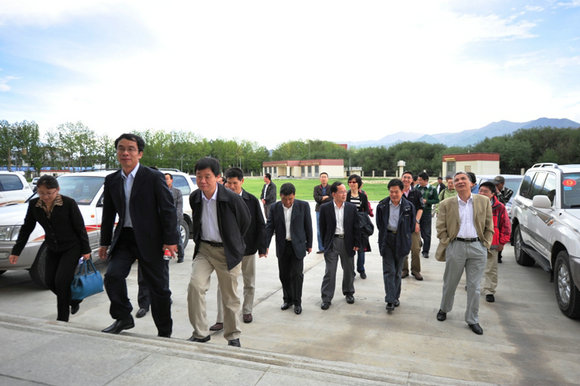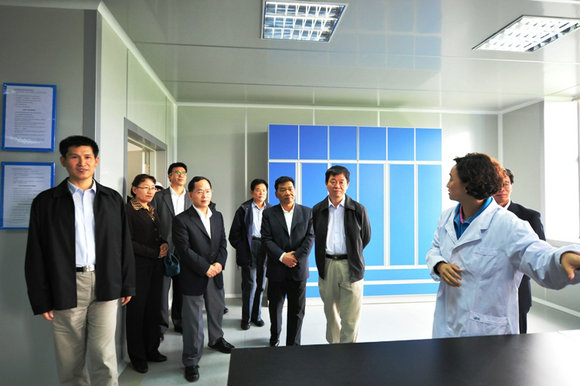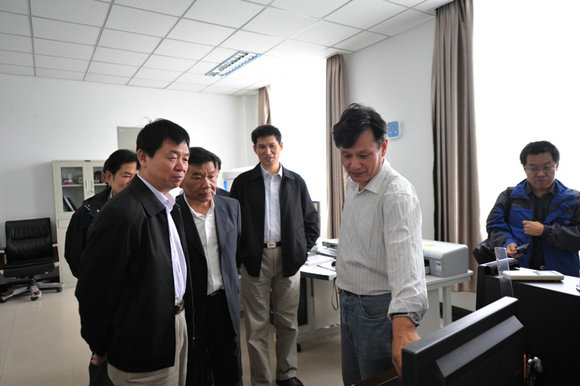| News |
| Latest news | |
| Int’l Cooperation activities | |
| Events & Announcement | |
| Recent Activities |
| Location: Home>News>Latest news |
| CAS highlights ITP development in Tibet |
“ITP Lhasa campus will not only serve as base camp for scientific research by CAS scientists, but also as a supportive platform for international scientific cooperation.” Thus remarked Prof. ZHAN Wenlong, CAS Vice President, during his visit to ITP Lhasa campus. Acknowledging the establishment of an observation site by National Astronomical Observatories, CAS, at the Lhasa campus, Prof. Zhan saw the campus in the near future as a base for multi-disciplinary research. His view about the direction of effort in ITP development at Lhasa was not alone, as the heads of the CAS and the Tibet Autonomous Region (TAR) have all realized the significance of the scientific research carried out by the ITP in Tibet. That’s why a group of delegates consisting of three Vice Presidents of CAS, respectively Profs. LI Jiayang, ZHAN Wenlong and DING Zhongli, and former deputy sectary-general of CAS GUO Chuanjie visited the ITP in early August, 2010.
They were accompanied by TAR Vice Chairman MENG Deli during their visit to the ITP Lhasa campus. After the work summary by ITP director Prof. YAO Tandong on the institute’s academic achievement and international cooperation, ITP’s fast development was highly praised. Profs Li and Ding also emphasized the necessity to eye on regional need, and to better serve regional social and economic development with high-level research achievement. TAR Vice Chairman Meng acknowledged the contribution ITP has made in the past few years in regional social and economic development. Seeing ITP as one of the top-notch national research institutions with sophisticated apparatus and high-level academic research, Mr. Meng still hoped the institute to provide strong support to Tibet social wellbeing and economy. In doing so, he expected closer ties between local academic institutions with ITP to promote the regional scientific research in Tibet. The CAS delegates also visited ITP’s laboratories of Tibetan Environment changes and Land surface processes (TEL) and Continental Collision and Plateau Uplift (LCPU), respectively, at the Lhasa campus, as well as some field monitoring stations over the plateau.
|



